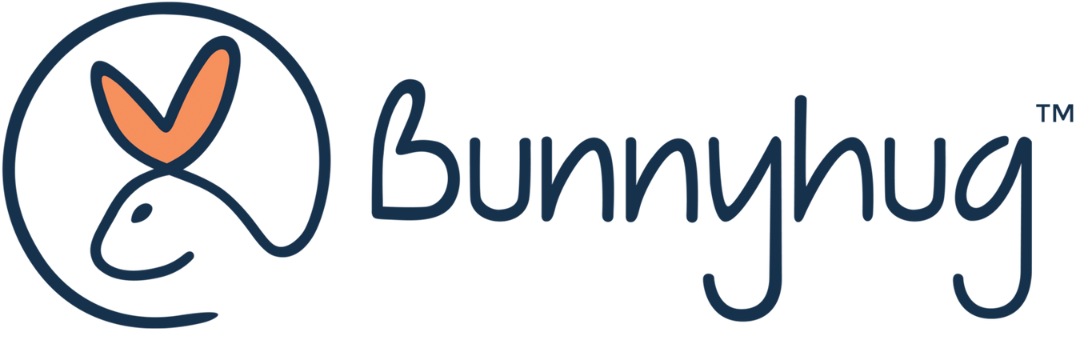Babies may not speak our language, but they communicate with us through their bodies, expressions, and movements. As a parent, understanding your baby's various cues and body language, can be a game-changer in building a strong bond and providing your baby or children with the best care possible.
In this blog, we are going to delve into the world of baby body language, exploring various cues and signals your baby may be sending, and how to respond to them effectively.
Welcome to Bunnyhug, Your Trusted Companion on the Incredible Journey of Pregnancy and Parenthood, where all the contents are carefully curated by us and verified by Dr. Pranesh.
Why are baby cues important?

1. Relationship building:
By responding to your baby's cues promptly, you can build strong relationship, trust and strengthen the parent-child bond.
2. Improvement of Emotional Well-being:
Meeting the needs of your baby promptly helps them feel secure and content, promoting emotional well-being and sleep.
3. Prevents Frustration:
A crying baby or fussy baby can be frustrating for both the baby and the caregiver. Decoding their cues helps reduce frustration and stress.
4. Enhances Development:
Responding to your baby's body language cues can support their cognitive, emotional, and social development.
Let's try Understanding Your Baby's Body Language Cues

1."Happy Feet: The Joyful Significance of Baby Leg Kicking"
When your baby kicks her legs in the air during play, it's often a delightful display of her excitement and happiness. It's a way of exploring her body and engaging with the world around her. This lively movement is a sign that she's feeling playful and content.
2."Seeking Solace: What Turning Away Indicates in Babies"
When your baby turns her face away, it can signal several things. It might mean she's overstimulated and needs a break from sensory input. Alternatively, baby's individual cues shows that the baby could be seeking a quieter or calmer environment. It's her way of regulating the stimulation around her.
3."Arching Back: Signs of Discomfort in Your Baby"
When baby arches the back, it is often a response to discomfort or pain in babies. It can be related to issues like gas, an acid reflux, or colic. This body language cue is a way of expressing that something doesn't feel quite right, and it's essential to investigate further to address the underlying issue.

4."Reaching Out for Love: What Baby's Outstretched Arms Mean"
When your baby stretches out her arms, she's communicating her desire to be picked up, held, or cuddled. It's a heartwarming sign that the baby seeks comfort and a strong connection with you. Responding to this cue with affection can enhance the bond between you and your child.
5."Tummy Troubles: Understanding Baby's Knees-to-Chest Posture"
Folding her knees up toward her chest is often a response to tummy discomfort, such as gas or bloating. It's a self-soothing posture that can help alleviate pressure on her tummy and provide some relief. Massaging her tummy or adjusting her feeding routine may be necessary to ease her discomfort.
6."Head Banging or Rocking: A Look into Soothing Baby Behaviours"
Some babies engage in head banging or rocking as a self-soothing mechanism, especially when they're tired and trying to fall asleep. While this behaviour might seem concerning, it's typically harmless. Babies often find comfort in the rhythmic motion, and it can help them settle down and sleep.

7."Hyperactive Baby? Decoding Rapid Kicking and Breathing"
Kicking and breathing quickly are often signs of excitement or overstimulation in babies. When they're highly engaged or processing a lot of sensory input, their bodies may react with increased physical activity. It's crucial to monitor the baby and create a calming environment when needed to help them relax.
8."Tiny Fists: The Message Behind Baby's Clenched Hands"
When your baby clenches her fists, it's often a sign of tension or excitement. This gesture is a reflex that babies exhibit from birth, and it's usually temporary. It can signify her readiness to explore and interact with her environment. As the baby matures, her fist clenching will become more intentional and purposeful.
9."Kicking into Discovery: The Meaning of Nonstop Baby Leg Action"
Constant kicking is a common way for the baby to engage with their surroundings. It is baby's development and a sign of curiosity and exploration. When your babies kick frequently, she's learning about her body's capabilities and the world around her. It can also be a way to release energy and express her excitement.
10."Grabbing ears: What Baby Ear Grabbing Indicates"
When your baby grabs her ears, it can serve various purposes. Sometimes, it's a sign of teething discomfort, as babies may experience ear pain during this stage. However, ear-grabbing can also be a way for your baby to self-soothe or explore her body. If it's accompanied by signs of distress or infection, consult with a healthcare professional as it could be a sign of ear infection.
11."Soothing Sensation: The Meaning of Baby Finger-Sucking"
Sucking fingers is a soothing and self-comforting behaviour for many babies. It's an instinctual response that often starts in the womb, where babies can suck their thumbs or fingers for comfort. This action can help your baby relax and feel secure, similar to using toys or a pacifier.
For many parents recognising baby cues can provide valuable insights into your child's needs and emotions. Keep in mind that each baby cues baby body language is unique, and while these cues offer general meanings, it's essential to consider them within the context of your child's behaviour and overall well-being. Responding with love and care to these cues can contribute to a happier and a strong relationship between children and their parents
While we strive to provide accurate and reliable information, they are intended for general guidance and educational purpose only. Remember every pregnancy and parenting is unique and most importantly your health and the well-being of your child are paramount. Therefore, we recommend consulting your own healthcare provider for personalized guidance and recommendations.


